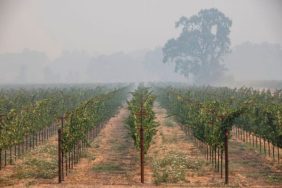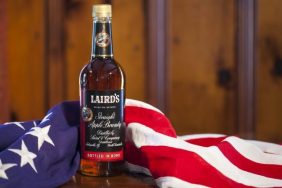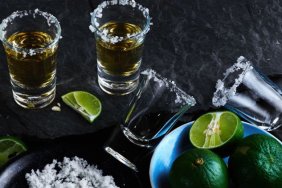Photo: Soberano
Brandy is something of a mystery to many novice drinkers. It comes with visions of distinguished gentlemen in large, leather chairs sipping it while smoking cigars and talking about politics. The definition of brandy is as complicated as it seems. This distilled wine gets its name from brandywine. This is a variation of the Dutch word brandewijn or “burnt wine”.
Surprisingly, with all the mystery, brandies are incredibly easy to make. But, what exactly is brandy? “Specifically, brandy is a distilled spirit made from wine,” says Andy Taylor from Spain’s Gonzalez Byass. “It is typically aged in barrels which provide flavor and color.” Brandy is special because it is usually grape based. “Different from other brown spirits which are typically grain based.” Grape based spirits have a very different flavor profile from brown spirits.
This name comes from the fact that, in the simplest sense, brandy is made from the product of heating wine. Most brandies are made from wine or fermented fruit that are distilled. But, brandy can technically be made from the distillation of any sugar-based liquid. The fermentation results in the alcohol that eventually will be called brandy. Many brandies are then cask aged to create a specific variety of brandy. There are many kinds and they include: cognac, armagnac, brandy de jerez, American brandy, eaux-de-vie, apple brandy, calvados and pisco. “In a broader sense, there are brandies made from other fruits most popularly apple (Calvados) and pear and peach,” says Taylor. “Eau de Vie (“water of life” in French) refers to clear brandies—usually lighter in taste, made from various fruits.”

Soberano
The proper way to drink brandy is in a snifter at room temperature. In addition, the brandy glass should be held in your hand so that your body temperature can add to the heat. This opens up the flavor and adds to the aroma and the overall experience. “Brandy can be applied to cocktails, the conventional way to drink it is after dinner where it imparts digestive properties.” Cocktails include: The Brandy Alexander, Sidecar, Jack Rose and the Brandy Sour.
Brandy is typically associated with France. It’s assumed that French brandies (cognac and armagnac) are usually of the highest quality. Spanish brandy makers use different grapes than France or US which provides unique flavor profile. “This product combines some of the great qualities of French brandy at a more affordable price,” says Taylor.
Varieties of brandy include:
Cognac
Cognac is probably the most well-known form of brandy. Named for the region of France it’s made in, cognac is made in an area famous for its many vineyards and wineries. To be called cognac, it must meet a specific set of regulations. It needs to be made from specific grapes and needs to be distilled two times in copper pot stills before being aged for a minimum of two years in French oak casks. Cognac is aged similarly to whiskey as the best ones are aged much longer than the lowest required maturation time.
Popular Brands: Hennessy, Remy Martin, Camus, Martell, and Courvoisier.
Armagnac
Similar to cognac, armagnac is a brandy made in France. It isn’t made in the Cognac region, but in the Armagnac region in southern France. Like cognac, armagnac needs to be made from specific grapes that are grown in the area. The difference is that it is made using column stills instead of pot stills. It is then matured in French oak casks before bottling. Even though armagnac was made before cognac, the number of distilleries and the amount of production is far less. Hence the fact that it is much lesser known than its fellow French counterpart.
Popular Brands: Cerbois Bas, Sempe, Delord, Dupeyron, and Chabot.
Calvados
Calvados might sound Spanish, but it’s actually French. Although not made with grapes, calvados is still considered a brandy. It’s made from apples and comes from Lower Normady in France. The make calvados, apples are picked before being pressed to make juice. The juice is then fermented to create an apple cider before it is distilled. After it’s matured for two or more years in oak barrels, it is ready to be bottled. The reason it isn’t considered apple brandy is because of the area it is made. Any apple based brandy created outside of this area is simply referred to as apple brandy.
Popular Brands: Boulard, Christian Drouin, Daron, and Busnel.
Brandy de Jerez
This Spanish brandy is made in the Jerez region in Andalusia, Spain. The cities of El Puerto de Santa Maria, Jerez de la Frontera and Sanlucar de Barrameda make up the triangle where Brandy de Jerez is distilled and matured. On top of being a brandy itself, the spirit is also a popular ingredient for Spanish sherry production. Brandy production began in the area because the Moors weren’t allowed to drink wine because of their religious beliefs. They chose to distill the wine and create another alcohol instead so as to not break their religious oaths.
Popular Brands: Gonzalez Byass, Magno, Lustau, Fundador, and Gran Duque.
American Brandy
In the United States, if it isn’t grape based, the rules state that all brandy labels need to clarify what fruit is in the brandy. They need to distinguish between peach, apple or whatever base fruit is being used. In general, the US is not looked at as a high quality brandy producer, but there are definitely a few great brands available. There are no rules that regulate the amount of years American brandy needs to age, but if it isn’t matured for at least two years it must be labeled as an immature spirit.
Popular Brands: Korbel, Bartlett, E &J, and Paul Masson.

Soberano
These aren’t the only varieties available. There are many different style from all corners of the globe: Apple Brandy, Pisco, Eux-de-Vie, Dutch brandy, Japanese brandy, Armenian brandy, Cyprus brandy, Greek brandy, Kanyak (Turkey), South African brandy, Stravecchio (Italy) and Grappa (Italy).








